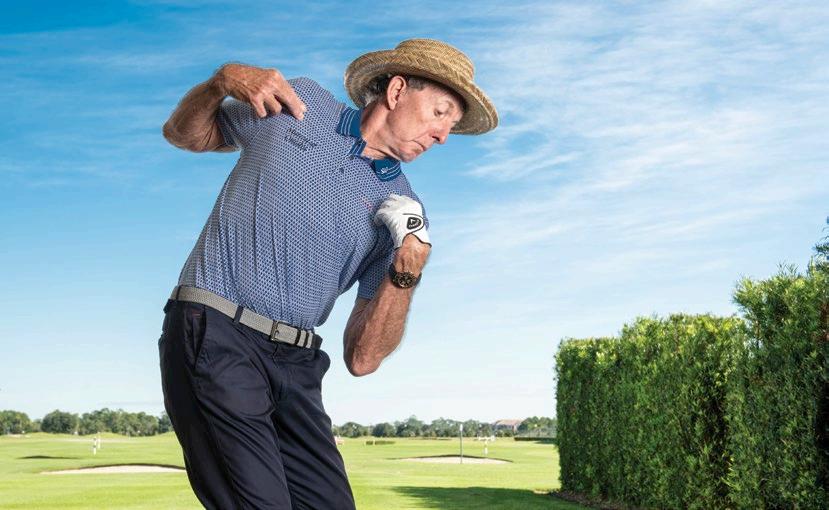
2 minute read
David Leadbetter
A Little Extra The secret move top golfers make for more speed
The closer you examine tour players’ swings, the more subtleties you’ll discover. One such move is so indiscernible in real time, you have to replay it in slow motion or see a 3-D rendition to verify what’s happening. But it is happening, and it’s a big reason the best players can generate so much speed when they swing down into the ball.
When you think of coiling during the backswing, you probably think it’s the rotation of the upper body against a stable lower body. But that’s only part one of how a tour player coils. Part two happens near the top of the swing, and it’s hard to see. As a good golfer’s lead shoulder (left for right-handers) stops rotating away from the target and the torso dips a little toward the ball, the right shoulder keeps coiling. If you thought of the shoulder girdle as one unit across your upper body, you might be surprised to know you can dissociate one side from the other. The left shoulder resists while the right shoulder continues to move. Many amateurs turn the shoulders together in the backswing and downswing, leading to swing-path issues that cause them to hit slices and pulls. As you near the end of the backswing, you want the pectoral (chest) muscles on your side of the body farthest from the target to continue to stretch (above) while the rhomboid and scapula muscles on that same side of the upper back contract.
A good drill to rehearse this dynamic action is to make a backswing, stop at the top, and then try to coil a little farther with your right shoulder. If you feel your pectoral muscles on the right side really stretching, you’re on your way to learning how to make this secret power move. — with ron kaspriske
david leadbetter is a Golf Digest Teaching Professional.
LET YOUR CONTENT COME ALIVE




900,000 unique visitors a month












